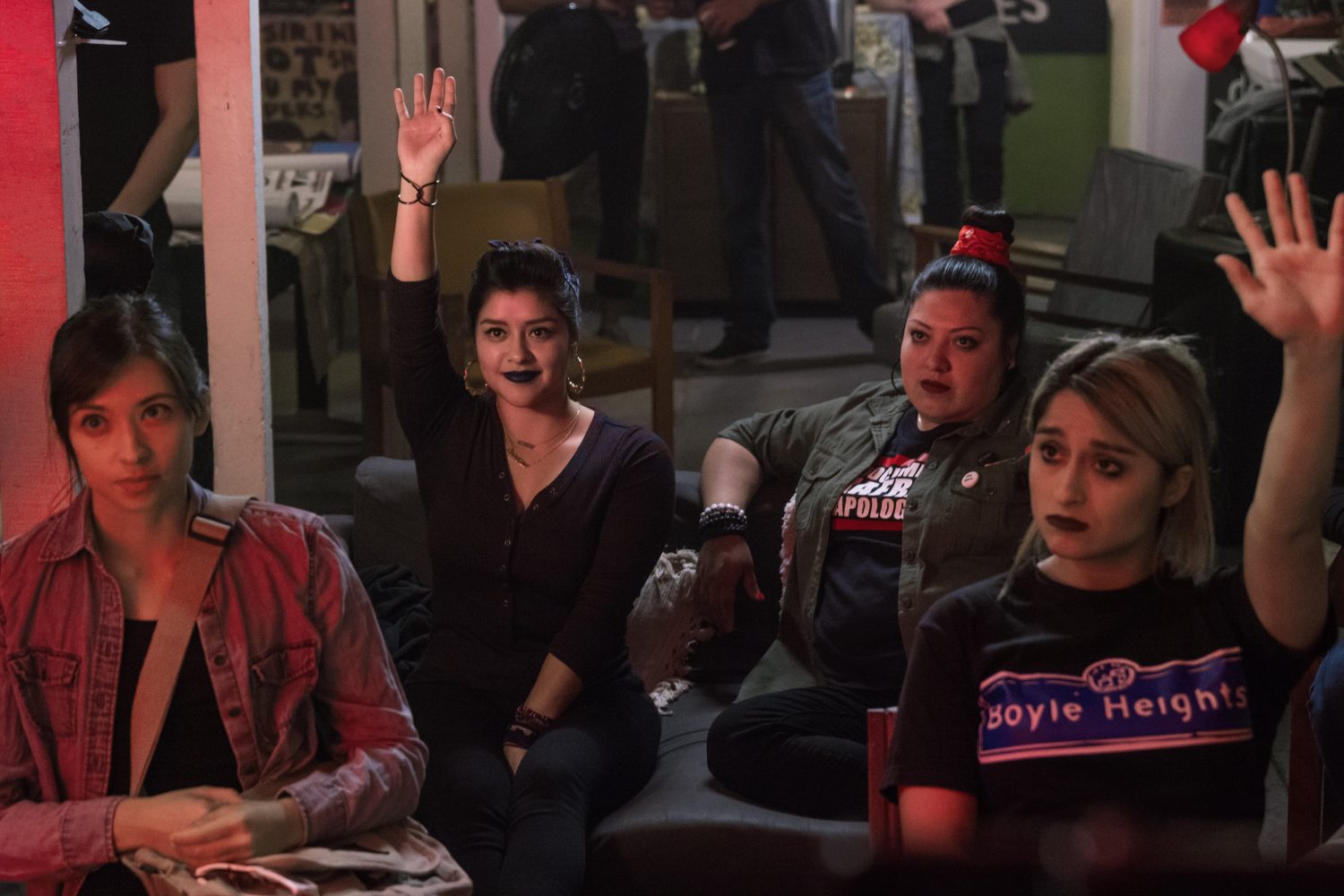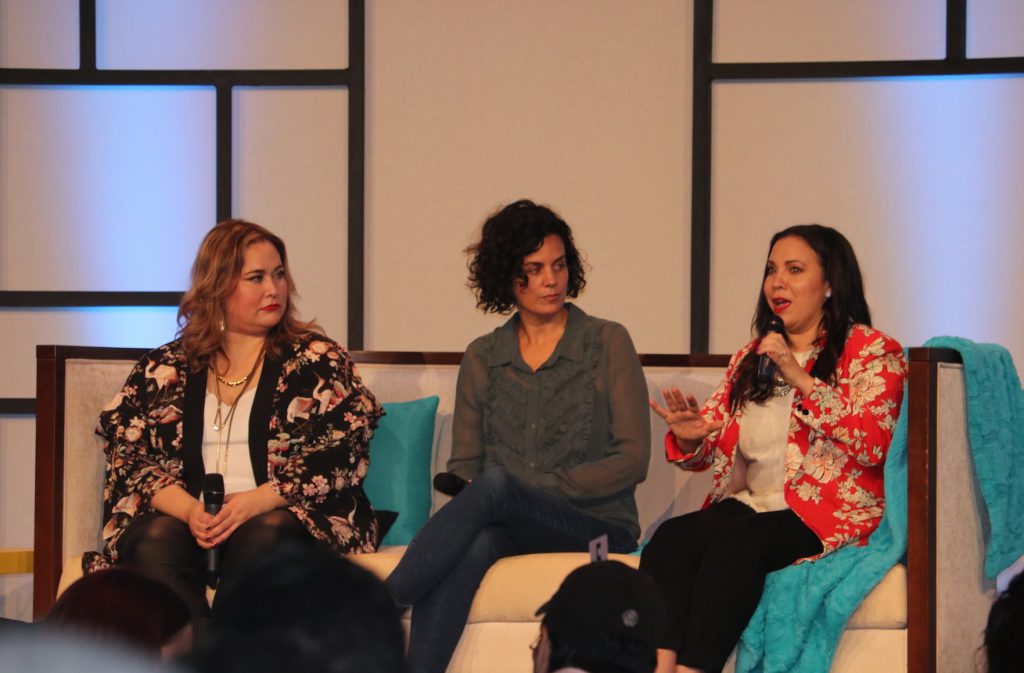Out of 500 television shows currently being produced, we can count on one hand (one!) the series that are being led by Latinas. The role of showrunner — you know, the person who has a vision for the show and guides the choices on everything from casting to who writes and directs each episode — has long been synonymous with men. White men, mostly. Think Matthew Weiner on Mad Men or Damon Lindelof on Lost. But women like Tanya Saracho (Vida), Gloria Calderon-Kellet (One Day At A Time) and Danielle Sanchez-Witzel (The Carmichael Show) are making a mark on contemporary television and proving that there may yet be a future where Latinx talent behind the camera flourishes and is celebrated as loudly as the kind in front of the camera. Gathered together as part of the Keynote luncheon at the National Association of Latino Independent Producers (NALIP) Media Summit, these three Latinas dished on how they got to where they are, how they dealt with the discrimination that risked putting them off their dream job, and what they hope to change as they move forward in their careers.
If there was one common takeaway from hearing their stories was the invaluable asset of mentorship. Calderon-Kellet, who admitted to teaching herself how to write for TV while watching old shows at the Paley Center, quickly realized that she knew very little about how to sell herself as a writer — let alone a TV show — when it came to meeting executives. She made herself take however many writers and producers she could out for coffee to learn whatever it is she needed to succeed. That’s how she eventually met Sanchez, and one meeting eventually led to another until she was in those writing rooms she needed to be in. To hear them both talk about their careers together felt, Calderon-Kellet noted, like a full-circle moment.
Sanchez, who followed a more traditional path (she found her way into the industry through her MFA program at UCLA) and Saracho, who came to television through her theater work in Chicago, spoke candidly about the next hurdle that Latina writers face once they get in the door. Both, as it turned out, were “diversity hires” early in their careers. That means it was a funded position set aside for someone who’d bring quote unquote diversity to the mostly white writers room in question. It’s the kind of position that can be as empowering as it is embarrassing. Sanchez, who preaches the idea that “you have to work harder than everyone on your left, and harder than everyone on your right,” nevertheless found herself being asked “How does it feel to get this job because of your last name?” Saracho experienced a similar situation, being openly asked, “You do know you’re the diversity hire, right?”
Their respective responses and their candid remarks looking back reflect two valid approaches to weaponizing those kinds of quota programs. Having seen her writing career take off — she’s since written and produced shows like My Name is Earl, New Girl and LA to Vegas — Sanchez is happy to be the poster girl for diversity. A shining example of how that pipeline can, in fact, help out those on the margins.

Saracho, who staffed her Vida crew with as much Latinx talent as she could find (“It’s slightly harder, but not really that hard, you know?”), has made a mission to make such “diversity hires” moot in her writer room. She calls it the funded position as she hired mostly Latina writers; it’s not like she was going to be asking for more diversity. She remains committed to merely blanketing her shows with talented folks that already fill in whatever diversity quota she would’ve needed to fill. Just as Ava DuVernay is changing the game over at Queen Sugar and giving female directors the chances they need to finally nab better directing gigs in TV, it’s clear Saracho sees her show as a talent incubator that’ll hopefully spawn more writers and showrunners in turn.
That’s ultimately all they can hope to do. They can’t wait for the industry at large to catch up, or to pay attention to the notion that investing in projects about black and brown people is actually profitable. “So much of Hollywood is like wanting to be cool, wanting to be ahead of the curve,” Sanchez noted, “Well, the curve is inclusion. It’s already happening.”
But perhaps the most inspiring moment came courtesy of Saracho, who, like Calderon-Kellet, was advocating for more creators to tell stories about us. “It’s a political act to put brown bodies on the screen, already,” she said. “And to put brown bodies on the screen just living, it’s the most radical act.”
The National Association of Latino Independent Producers (NALIP) seeks to inspire, promote, and advocate for Latino content creators in media. As a non-profit organization, NALIP advances the development of Latino content creation through its programs focusing on narrative, documentary, TV, and digital formats. For more information, visit NALIP.org




